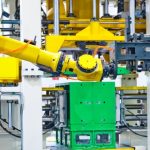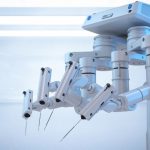Against the backdrop of rapid advances in biotechnology, Colossal Biosciences has announced its acquisition of ViaGen, a Texas-based pet cloning company famed for its reproduction of beloved cats, dogs, and horses. This is Colossal’s first purchase of another firm and reflects a rising commercial and ethical interest in bringing back extinct and endangered animals. The move demonstrates how entrepreneurial ventures and genetic science now intersect on projects ranging from pet resurrection to species conservation, drawing attention from public figures and investors alike. As companies reckon with the technical and societal implications of cloning, the partnership broadens the conversation beyond celebrities and consumer markets.
ViaGen has previously made headlines for its success in cloning endangered species such as Przewalski’s horse, building on licensed technology from the team behind Dolly the sheep. While prior news focused on individual cloned animals or celebrity clients, the new acquisition ties ViaGen’s work to ambitious “de-extinction” projects. Colossal, meanwhile, has cultivated attention for its intent to revive the woolly mammoth and the Tasmanian tiger, as well as inserting dire wolf DNA into modern wolves. Unlike earlier stories centered on single technological feats or ethical debates, this partnership marks a concrete business strategy to combine expertise and resources, allowing both conservation and commercial pet cloning to proceed under shared guidance.
What Motivated Colossal’s Acquisition?
Colossal CEO Ben Lamm clarified that the acquisition was not driven by the company’s celebrity clientele or the media buzz surrounding cloned pets. Instead, the primary motivation lies in gaining ViaGen’s capabilities in cloning and the preservation of genetic material, specifically for endangered and extinct species.
“That’s not why we bought them,”
Lamm stated, addressing questions about the company’s intentions. He emphasized that ViaGen’s track record in conservation cloning makes them “a natural fit” for Colossal’s ongoing work to revive lost species by using advanced genetic technologies.
How Will ViaGen Operate Under Colossal?
Following the acquisition, ViaGen will function as a subsidiary of Colossal and maintain its leadership under President Blake Russell at its Austin, Texas headquarters. All 25 employees are expected to remain with the company.
“Joining forces with Colossal—the only de-extinction company and leader in biotechnology—gives ViaGen the scale, resources and shared vision to expand what we can do,”
Russell said, expressing confidence in the new structure. ViaGen will continue its commercial cloning services for pets while scaling up efforts aimed at endangered species recovery.
Does the Acquisition Shift Colossal’s Strategy?
Colossal’s long-term focus continues to be on restoring extinct animals such as the woolly mammoth, with profitability expected to follow these flagship projects. The acquisition is not anticipated to immediately impact operational timelines but is likely to support new species targets and further research. Colossal’s commercial ventures have largely centered on spin-offs such as Form Bio, Breaking, and other tech initiatives, and now ViaGen’s expertise integrates into this broader approach. Lamm views the deal as a means of strengthening technical capacities rather than an immediate revenue driver.
The integration of ViaGen into Colossal brings together consumer-oriented pet cloning services and pivotal conservation science under one roof. Readers interested in biotechnology and its ethical dimensions will note that while the cost of cloning pets remains high, the underlying scientific tools are being refined for broader applications, ranging from saving endangered species to reviving extinct ones. The acquisition is a reminder that the trajectory of de-extinction is shaped as much by collaborations and investment as by scientific achievements alone. For those tracking developments in cloned animals or species recovery, this move signifies a consolidation of expertise that may influence both markets and conservation efforts in years to come. Engaging critically with the implications—financial, ethical, and scientific—remains essential.










